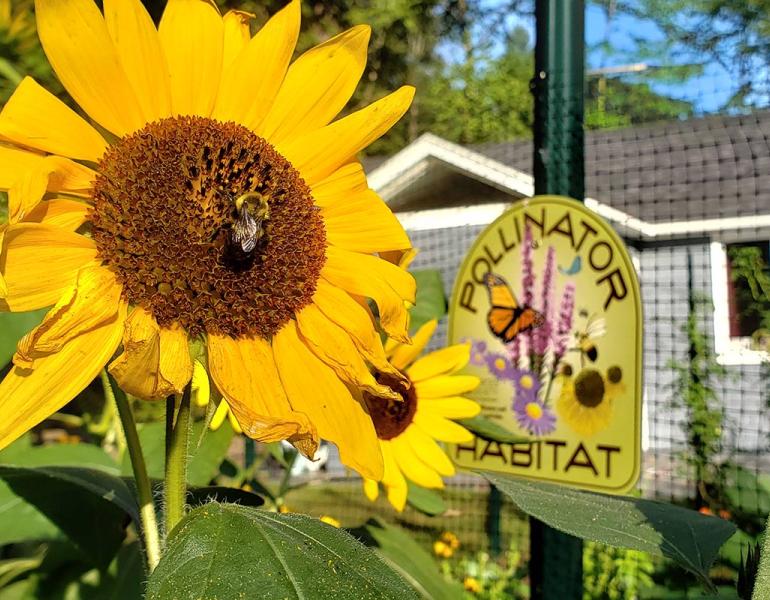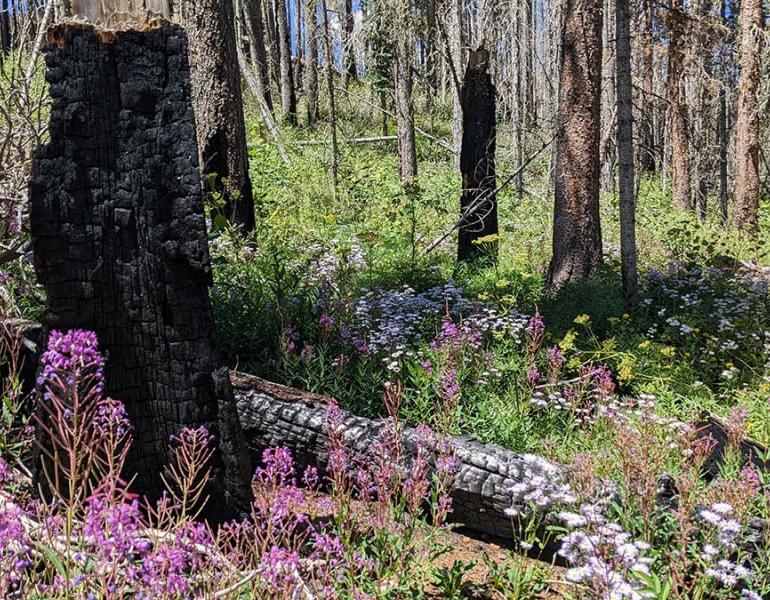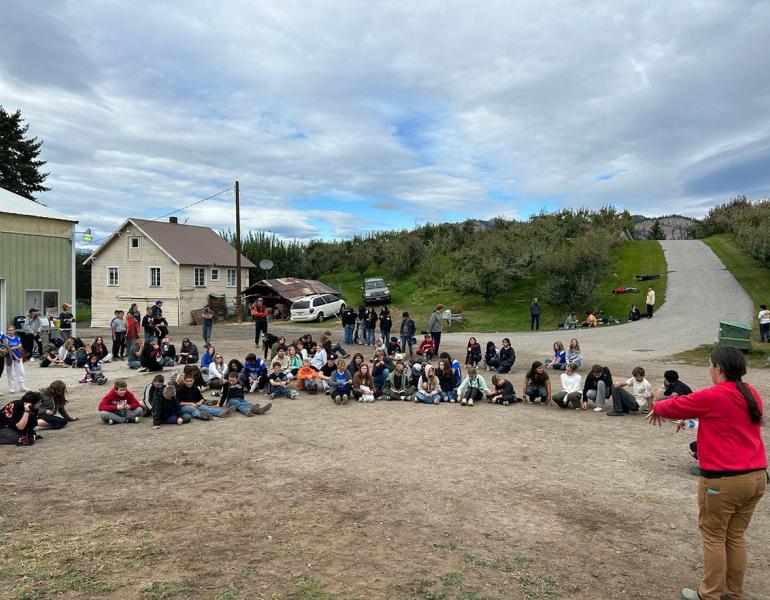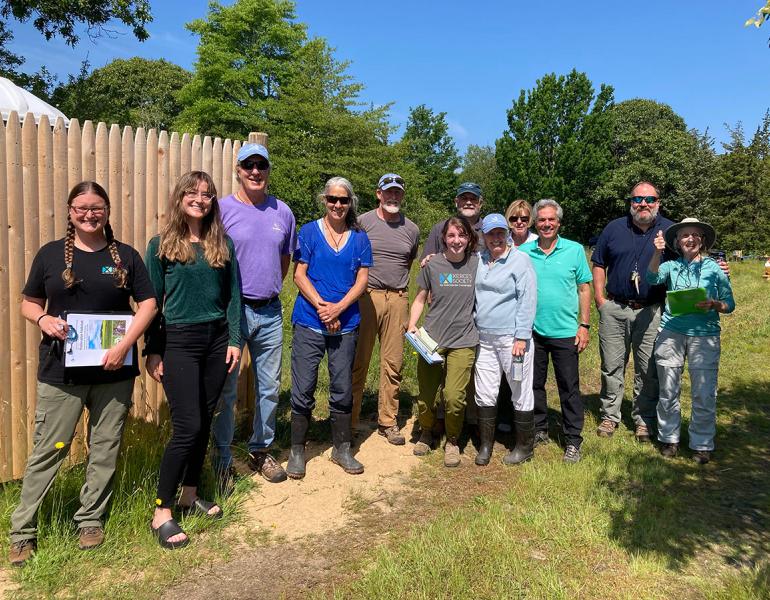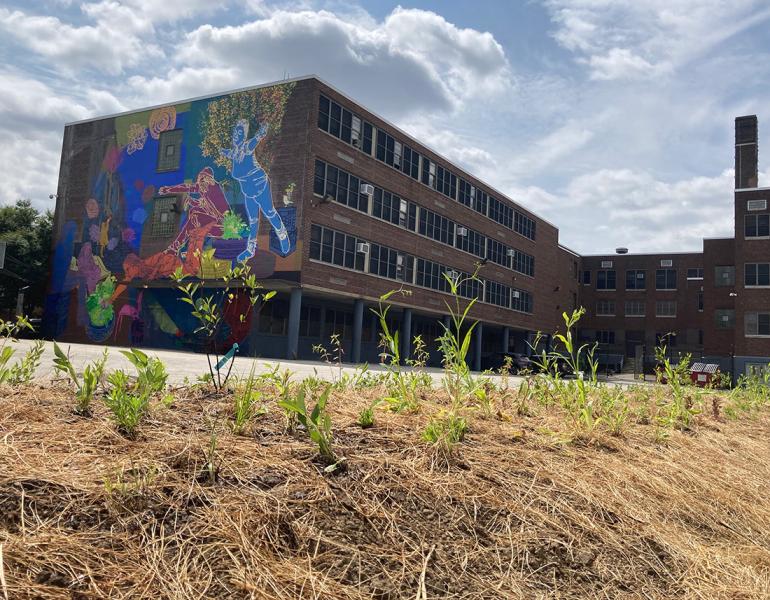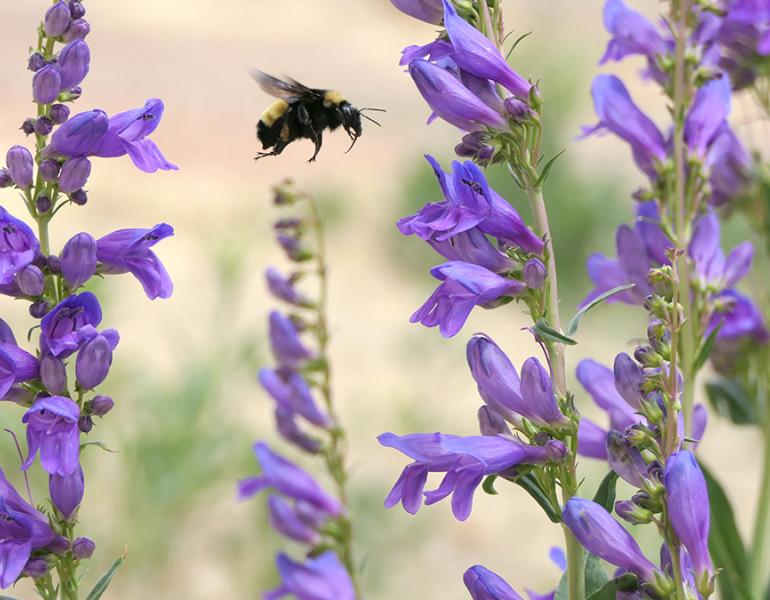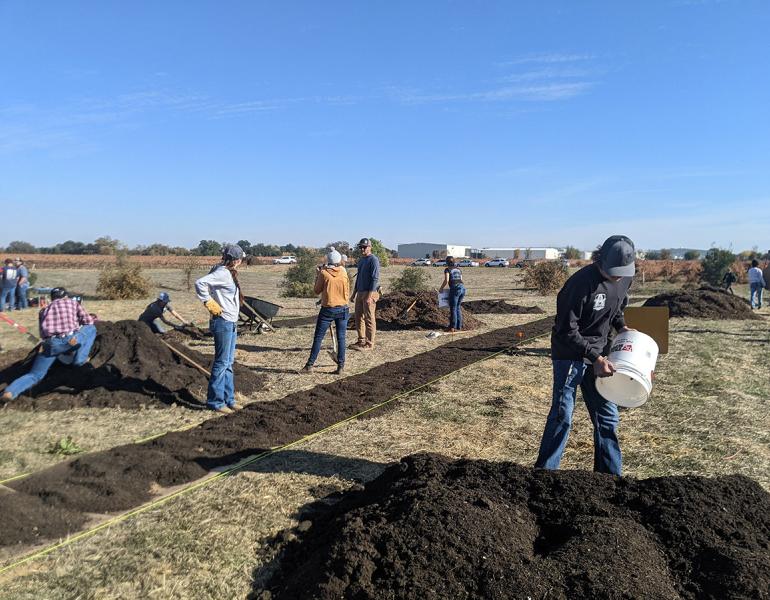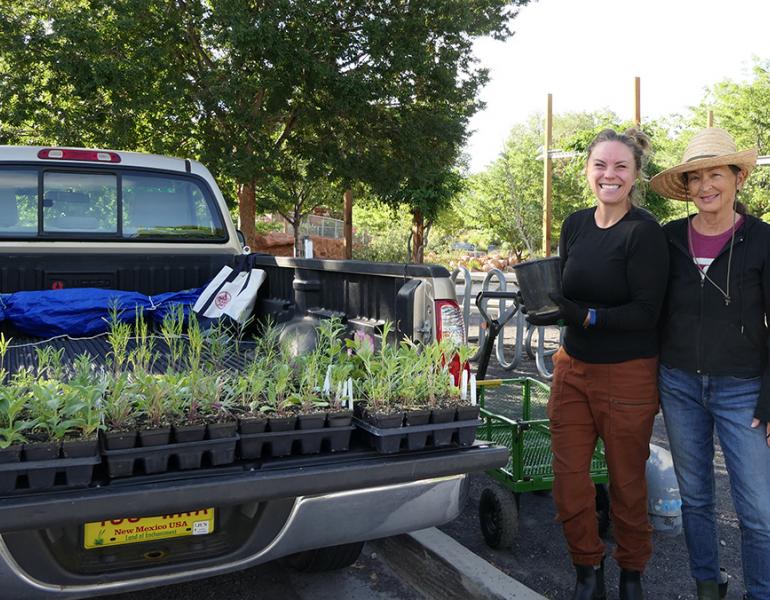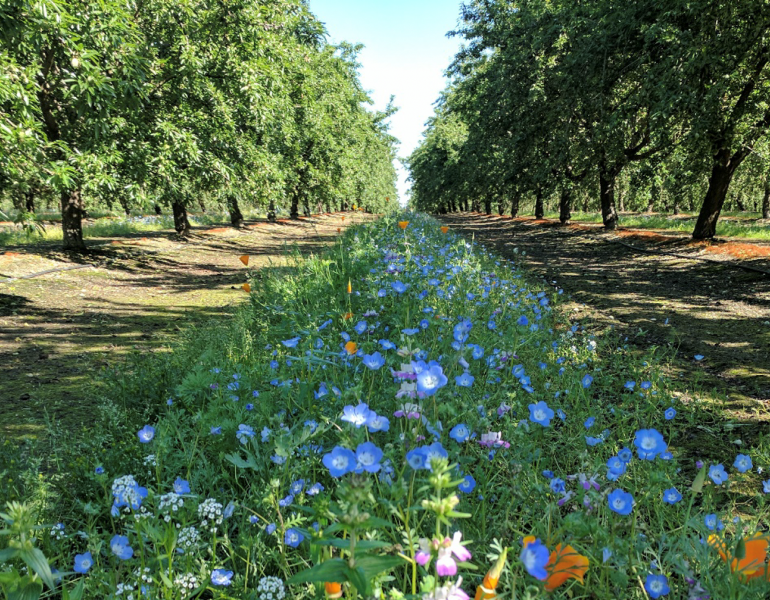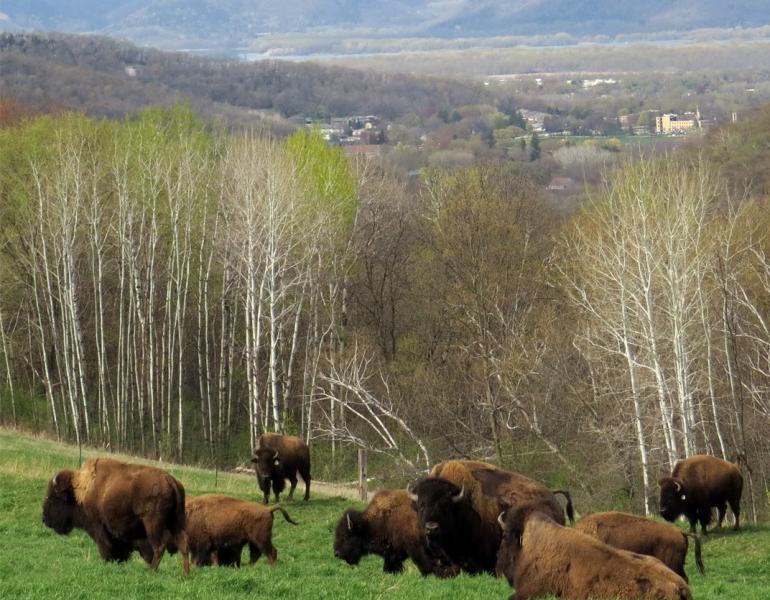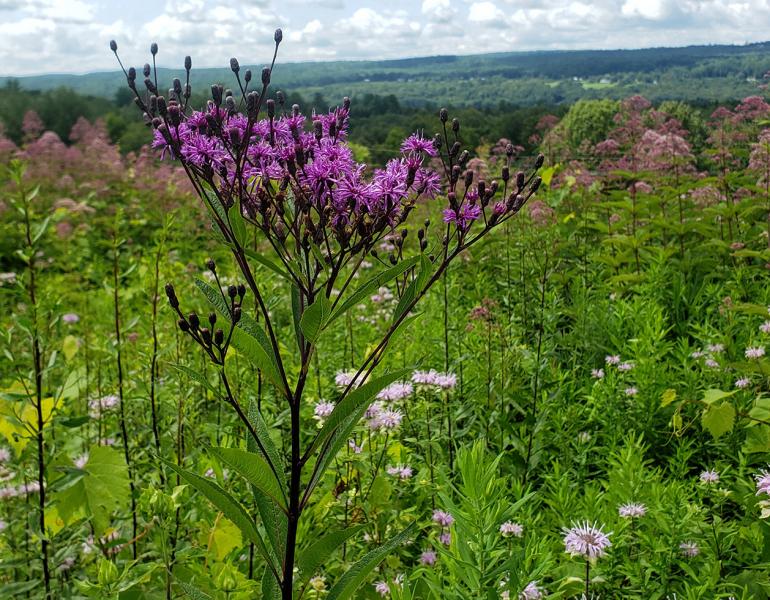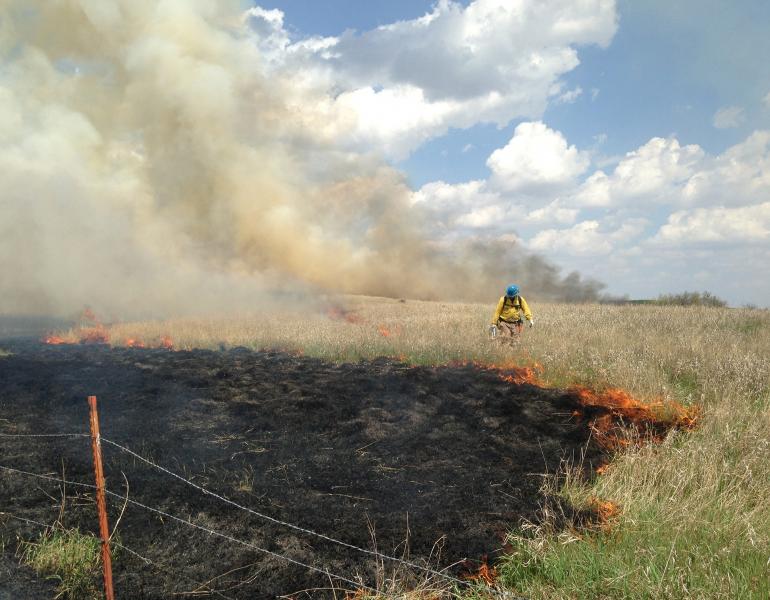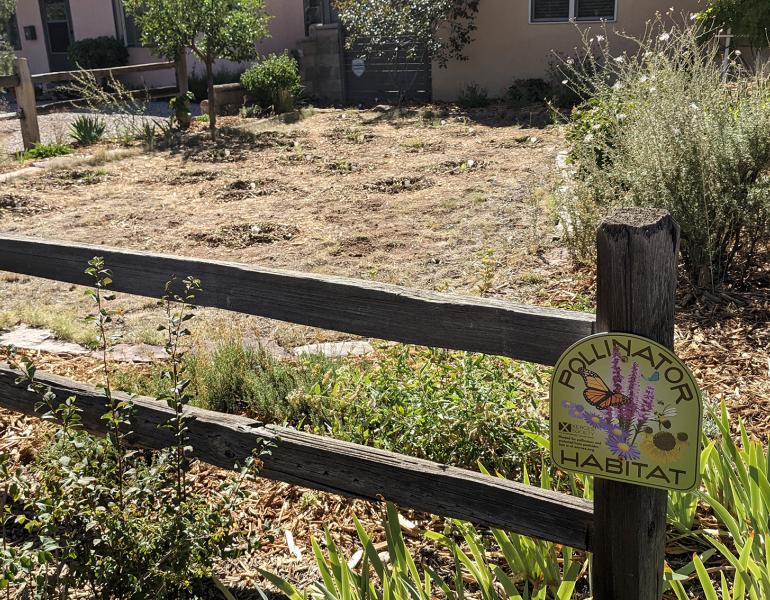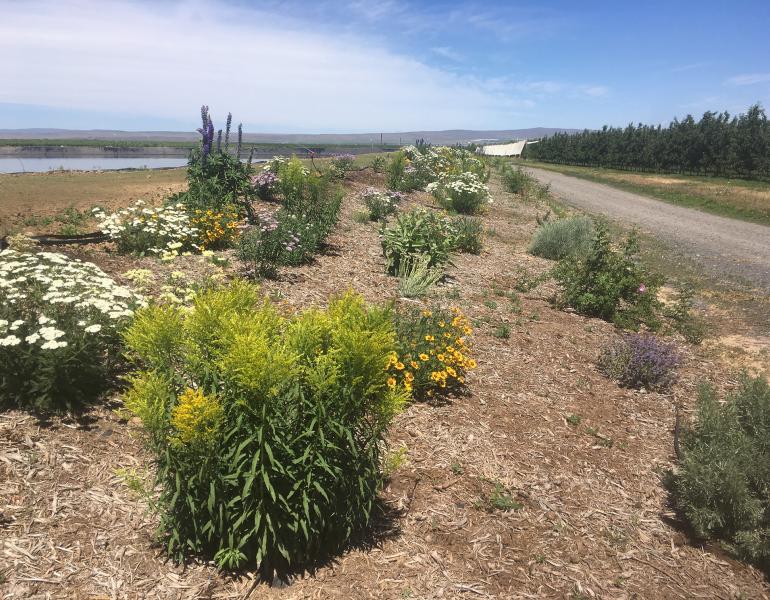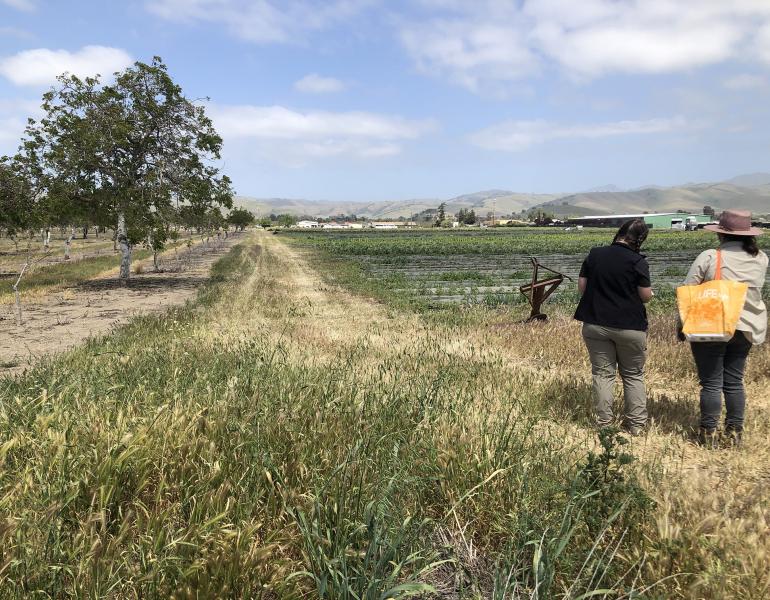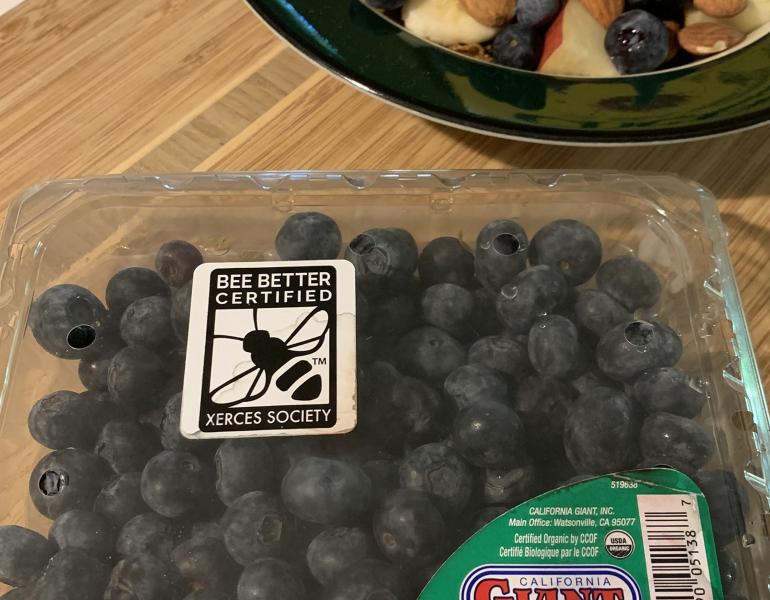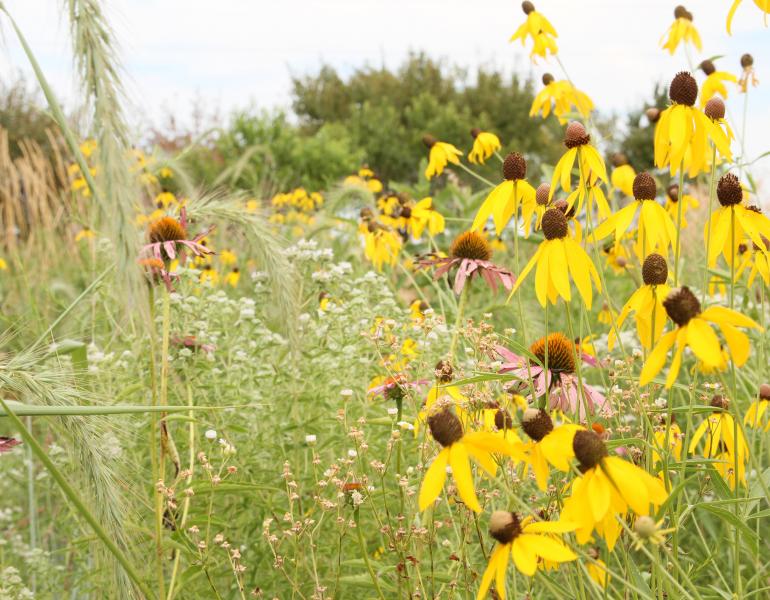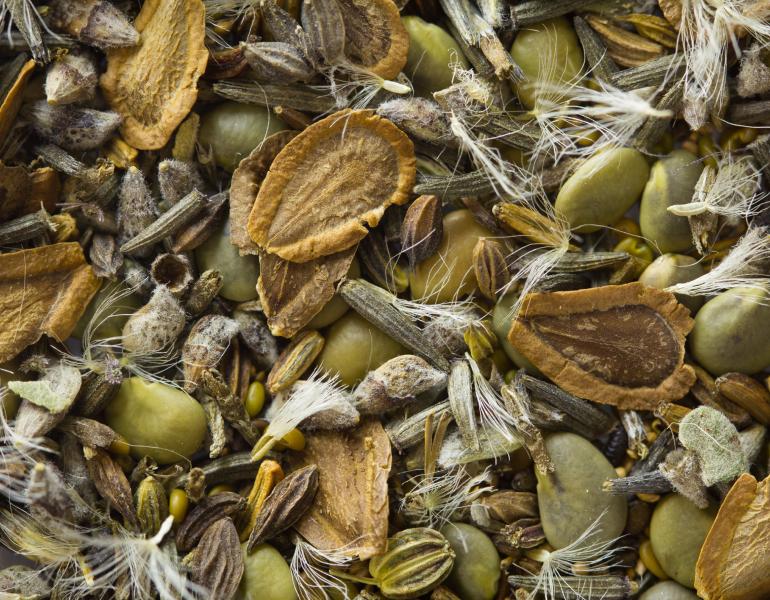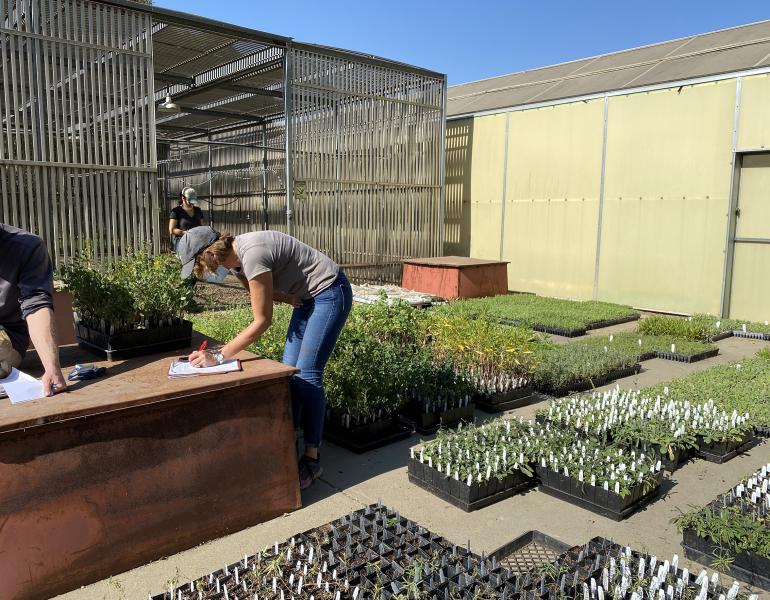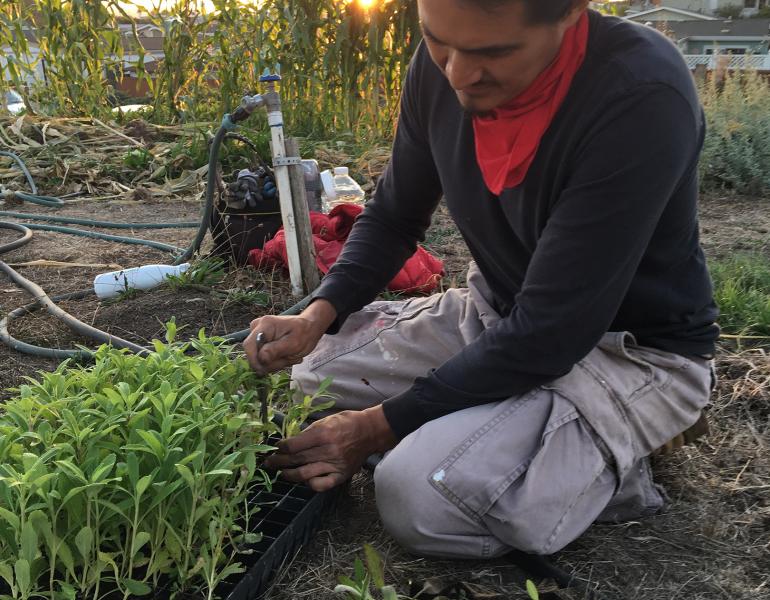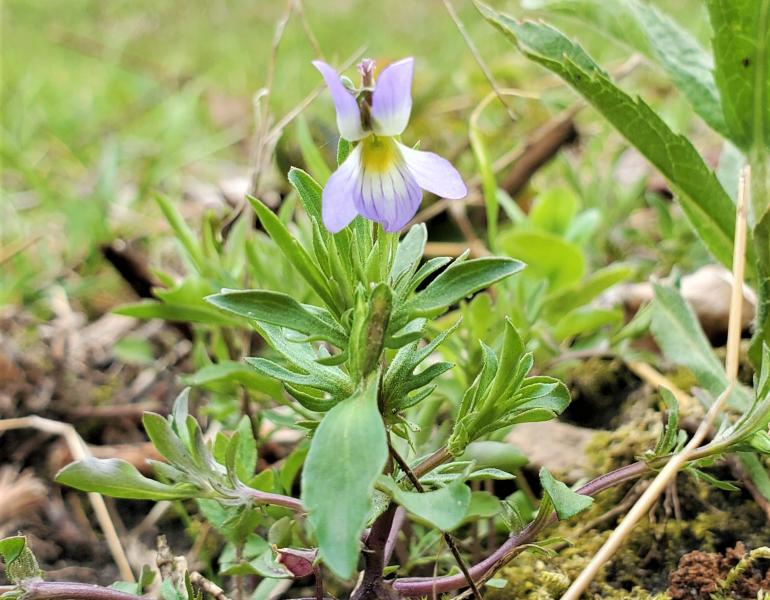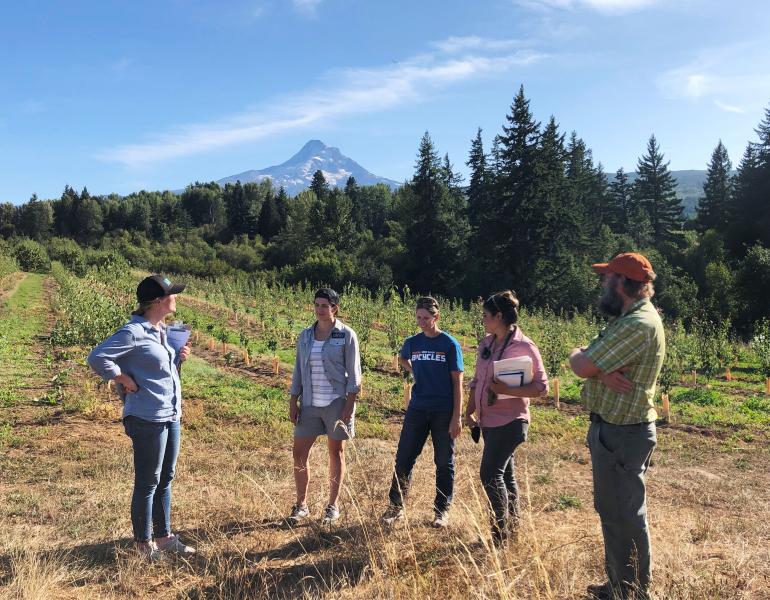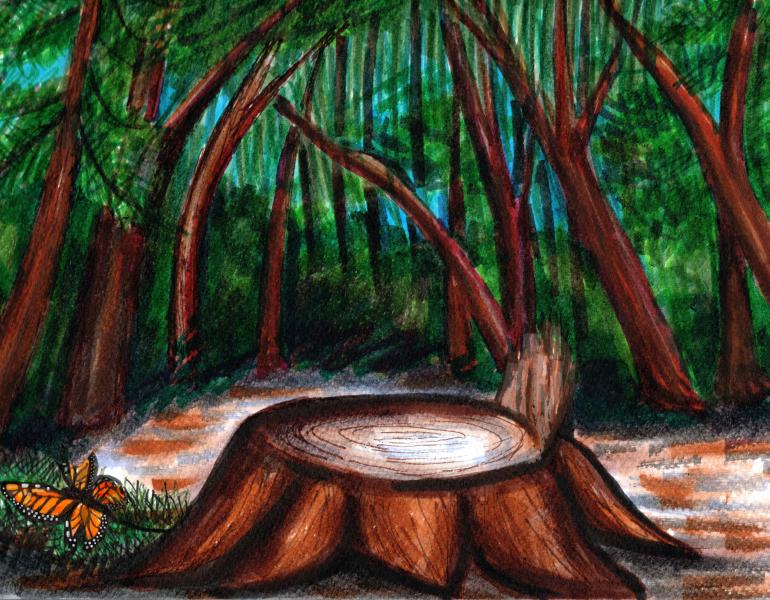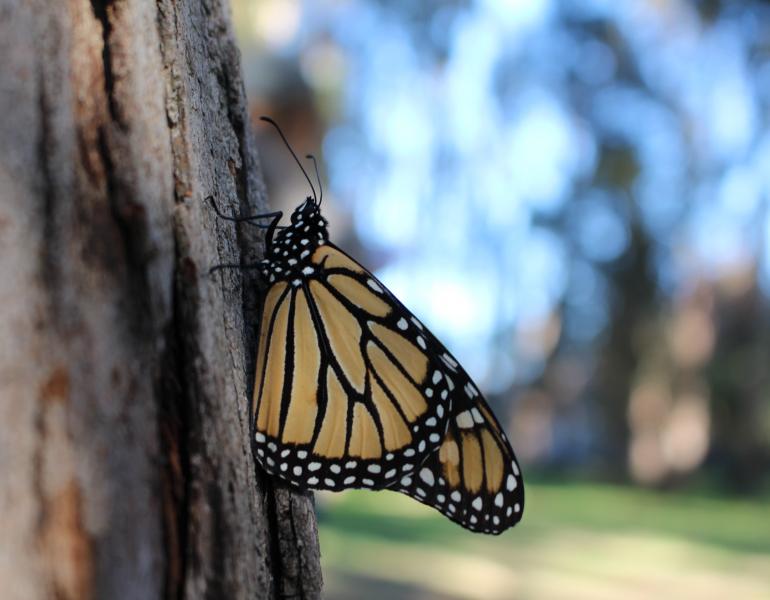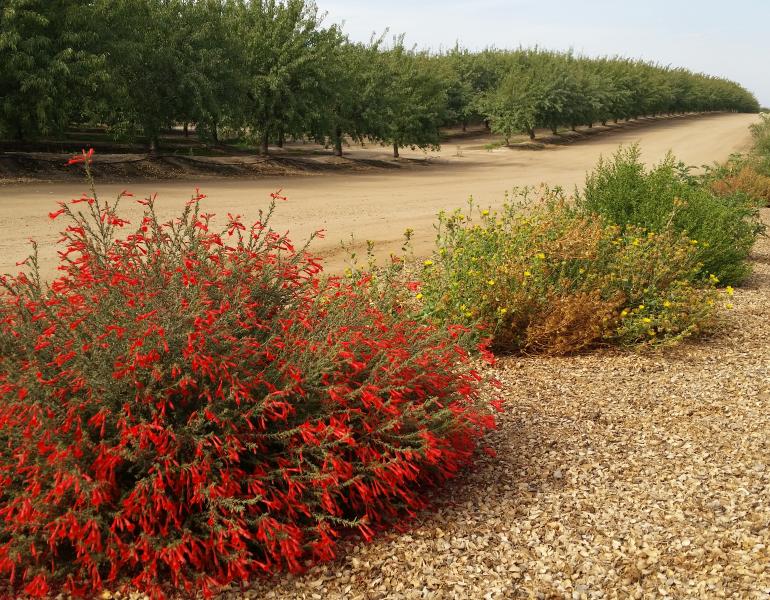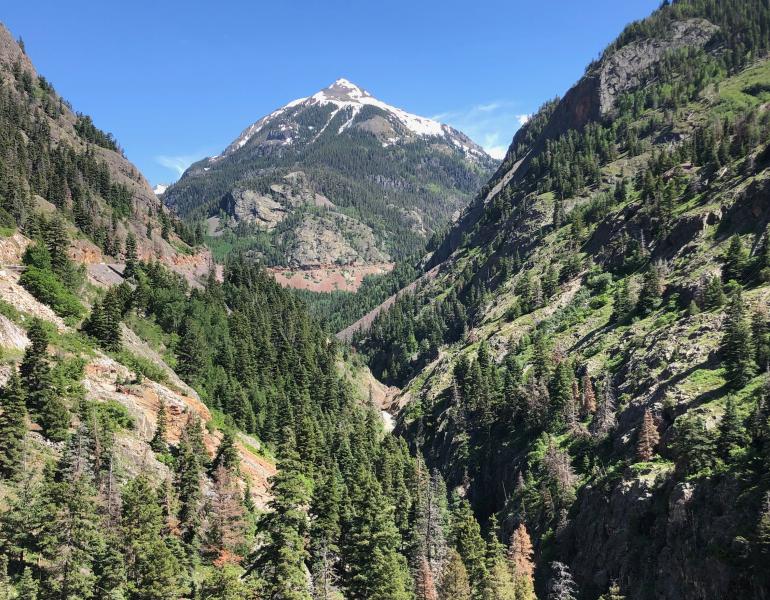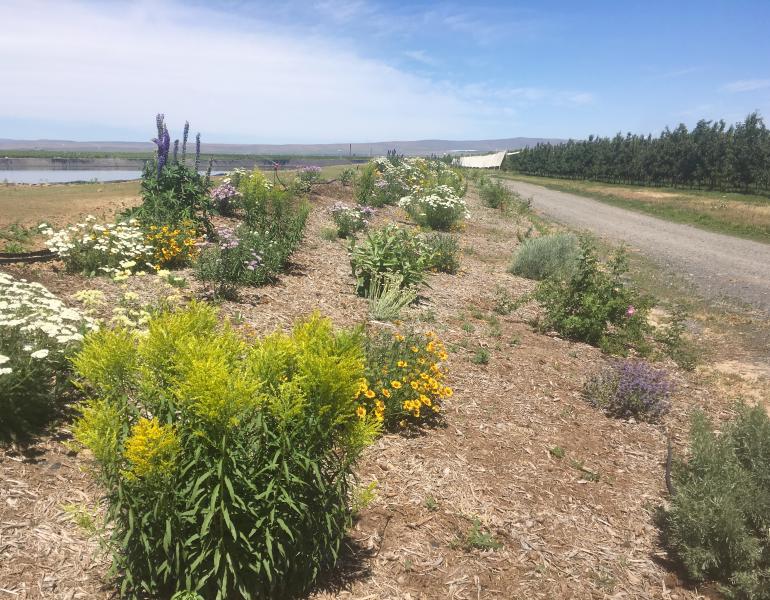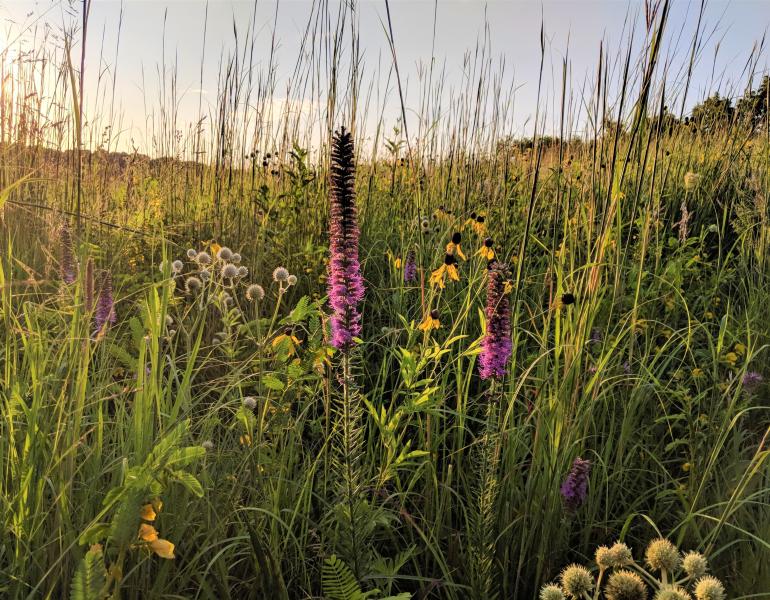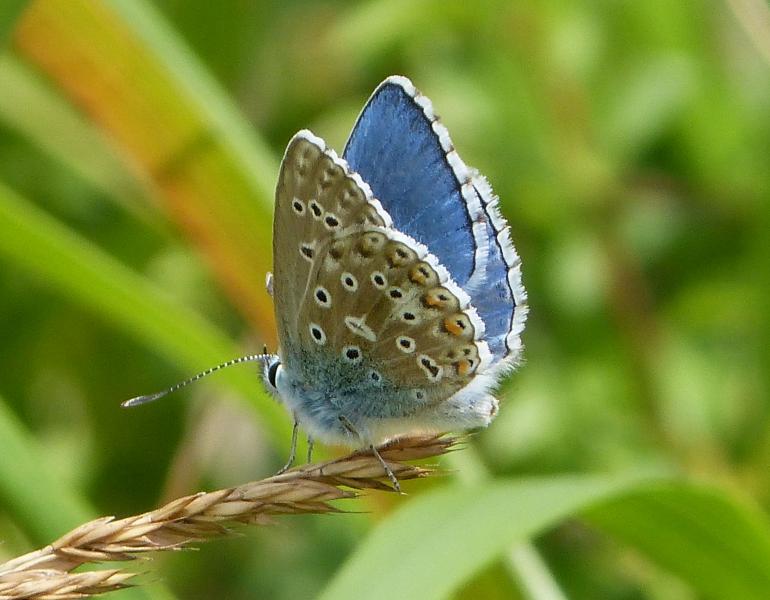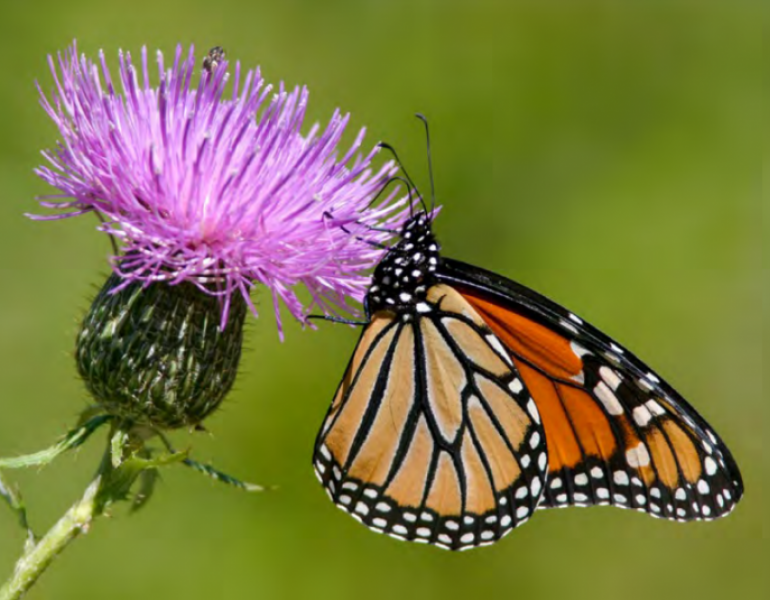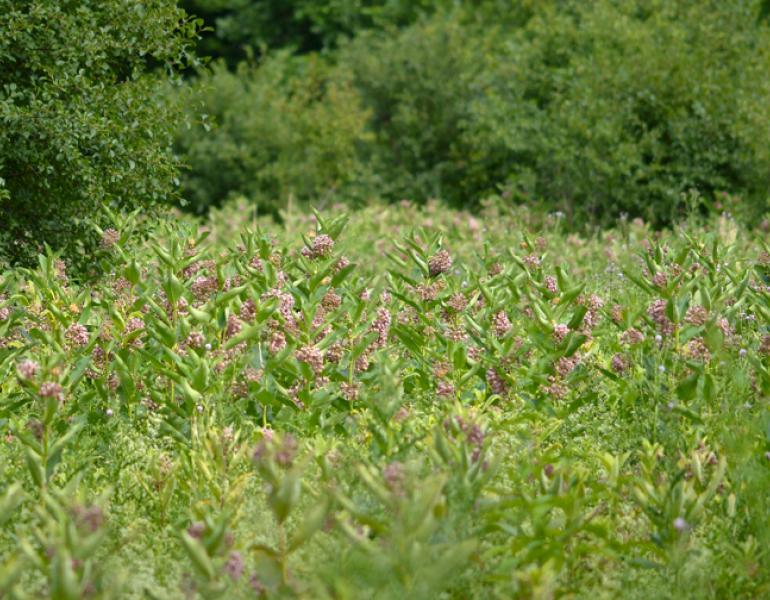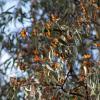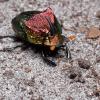Keeping honey bee hives will not help the 3,600 bee species native to North America. In fact, it might do the opposite. The best solution to bee declines is to address underlying causes like habitat loss and pesticide use. Native flower gardens can support all bees.
Habitat Restoration
Burning for Butterflies: The Role of Fire in Western Forests
While it may seem counterintuitive to burn plants and trees to conserve wildlife, smaller fires are an essential element of many habitats, like ponderosa pine forests.
Middle School Students Plant Habitat at a Washington Orchard
Last fall, Washington middle schoolers helped plant blooming hedgerows while learning about a local orchard’s connection to invertebrate conservation.
Habitat projects making a difference for California pollinators
Xerces staff visit planted habitat kits from years past to build long-term relationships with partners and appreciate long-term habitat serving invertebrates and other wildlife.
Cape Cod Town Transforms Mining Pit to Community Farm
Restored land in Massachusetts makes space for agriculture, wildlife habitat, and community.
High School Students Depave a Parking Lot to Plant a Garden
With support from USDA NRCS, Xerces, and the local community, a Philadelphia high school parking lot became a space for gardening and pollinator habitat.
Why Monarchs Need Early-Season Milkweeds
Western monarchs need milkweed for breeding as soon as they leave their overwintering sites. That's why we partnered on a project to make early-season native milkweed more available in California.
The Rewards of Prairie Management: Bountiful Evidence of Recovery
Pocket prairies at a somber site in Iowa are bursting with hope thanks to years of care in the form of techniques like prescribed burns and brush removal.
A Journey Down the Santa Fe Pollinator Trail
What does it take to build a pollinator-friendly city? Along the Santa Fe Pollinator Trail, this question has been answered plant by plant, across dozens of organizations and hundreds of helping hands.
Community Rallies to Restore Pollinator Habitat at a Fifth-Generation Family Winery
The family vineyard LangeTwins values sustainability and local wildlife. The launch of their 4-acre oak savannah restoration project brought the community together for a field day of support for native pollinator habitat. The group's hard work demonstrates the process of sheet mulching to prepare a site for new plantings.
Year Two of the Santa Fe Habitat Kit Program: Creating Community and Habitat in the High Desert
Pollinator habitat is making a comeback in Santa Fe. The Xerces Santa Fe Pollinator Habitat Kit Program provides native, drought-tolerant pollinator plants at no cost to residents and organizations in the city. Participants share how a newfound connection to nature has transformed their outlook on their environment and community.
More Than Food: A New Roadmap for Agriculture
In recent years, invertebrates on farms have received a little more mainstream attention, often under the broader umbrella of “regenerative agriculture,” a loosely defined philosophy that proposes farms should improve rather than diminish natural resources. With supporting investments from the USDA National Resources Conservation Service (NRCS), the Xerces Society recently inaugurated a five-year, multi-state research and development project focused on evaluating conservation practices that simultaneously maximize climate resilience, biodiversity, and market incentives.
Conserving Desert Pollinators and Water in the Face of Climate Change
One of the most immediate and tangible ways we can prepare for climate change as individuals is to restore native habitat. This not only builds a greater buffer for plants and animals to survive changing conditions, but makes our own gardens and landscapes more prepared to withstand drier or wetter, hotter or colder weather. While it will take everyone to stop rising temperatures at a global scale, I find hope in the cultivation of little patches of earth throughout Santa Fe hosting pollinator habitat kits.
Meet the Partners Saving Pollinators with Xerces’ California Habitat Kits
Over the past three years, Xerces’ California Habitat Kit program has given away over 105,000 plants to partners all across California who are interested in creating habitat for monarchs and other pollinators. We’ve been able to work with some really great people as part of this program who have helped to create habitat in a variety of landscapes.
Selecting seeds for bison, pollinators to share the land
While designing a unique seed mix for restoration takes time, it can be well worth the extra effort. The right mix of plants can boost the long-term ecology and function of a landscape and can be particularly important for working lands – those with multiple uses like agroforestry, grazing and silvopasture. In this article, Farm Bill Pollinator Conservation Planner Karin Jokela describes making the perfect mix to balance the needs of bison and pollinators.
Creating Wildflower Meadows from Scratch or by Simply Changing Mowing Regimes
When someone asks for help to increase pollinators in their landscape, many times the initial request is to start a pollinator meadow from seed. We love successful wildflower meadows started from scratch—but they can take several years of work. In the right place, just reducing mowing can result in improved conditions for pollinators.
Burning the Land
Fire has been used to manage prairies for centuries, and remains an important tool for grassland managers to reduce woody plant encroachment and increase flower production of key nectar and pollen sources. However, burning entire landscapes is problematic for pollinators, and fire must be used carefully.
Santa Fe Pollinator Habitat Kit Program Connects Pollinators and People
In Santa Fe, NM, Xerces is working with local partners to develop a city-wide Pollinator Trail focused on creating connected habitat through neighborhoods that lack greenspaces. In September, after months of planning and preparation, 350 habitat kits were distributed to residents and organizations. When many people come together around a common goal, small efforts can quickly add up to large-scale conservation.
Businesses Support the “Little Things that Run the World”
Businesses are a vital part of achieving the necessary change to avert insect declines. We are lucky to work with dozens of them, from independent artists to some of the world’s largest food companies. No matter the size, we work with businesses that share our commitment to protecting biodiversity in all its forms.
The Value of Conservation Planning
Land owners and managers across the state of California have taken up the call to get more habitat in the ground for monarchs. But there’s one important process that comes into play prior to on-the-ground restoration: before we can plant, we plan.
Coming Home: A Woman Landowner’s Conservation Calling
The next generation is something Ruth Rabinowitz spends a lot of time thinking about. As an Iowa farmer with a deep commitment to conservation, she feels it’s important for her to remember to look beyond her own lifetime.
Climate News: Nature-Based Climate Solutions Address Climate Change and Support Pollinators
Habitat restoration can contribute to countering climate change. Native trees, shrubs, flowers, and grasses increase carbon sequestration, while also providing habitat for butterflies and bees.
The Return of Wild Pansies at Polk City Cemetery
In Iowa, volunteers are working hard to restore an area of old prairie. They are seeing signs that the grassland is recovering, including the regrowth of pale coneflowers and wild pansies.
Helping Bees by Growing a Better Food System
Consumer demand ultimately pulls along our entire food supply. Demand for a particular product will trickle all the way back to the farms where it comes from. Bee Better Certified allows consumers to change the food system to help bees through the power of their wallets.
Reflections on Two Decades of Pollinator Conservation
The Xerces Society was one of the first organizations to focus on protecting pollinators. Over the last two decades, it has been at the forefront of the pollinator conservation movement and is recognized as a trusted source of science-based advice and information.
The Actual Earth of Earth Week
Soils support the most biologically rich animal communities on earth, outside of our oceans. A single cubic foot of tallgrass prairie soil may contain billions of organisms, and more species diversity than the entire above-ground Amazon rainforest. Yet we think little of this life.
Walmart Commits to Bee Better Certified and Other Measures for Pollinators
Walmart has committed to help address the pollinator crisis by asking its fresh produce suppliers around the world who supply its U.S. stores to phase out use of highly toxic and long-lived insecticides. By 2025, all fresh produce suppliers to Walmart must be certified in one of ten different third party-verified sustainable farming standards, a list that includes Bee Better Certified.
Pollinator Conservation Program Digest – April 2021
In this edition, Hannah Mullally describes a project to create a pollinator habitat demonstration site in the unique conditions of northern Maine, Karin Jokela shares her experience and suggestions for designing conservation seed mixes in Minnesota, and Anna Murray gives a glimpse into habitat planning and monitoring in California.
Pollinator Conservation Program Digest – December 2020
This edition focuses on work done across the country to support monarch butterflies and other pollinators. Jessa Kay Cruz describes how Xerces supports groups in California undertaking habitat creation projects, and Jennifer Hopwood presents a series of fact sheets about milkweeds, part of a nationwide project to provide information to roadside managers.
Planning and Planting for the Future of Monarchs in California
Pismo State Beach is one of the most important overwintering sites for monarchs in California. It has regularly hosted over 10% of the entire western monarch population each winter. Xerces Society has partnered with California State Parks, Creekside Center for Earth Observation, and others to develop and implement a plan to restore and enhance the site’s ability to host monarchs.
Conservación de Polinizadores en Aguascalientes, México
Over the last couple of years, Xerces Society staff have had the pleasure of supporting Héctor Ávila Villegas with his efforts to promote naturalized spaces that function as pollinator habitat and outreach in the state of Aguascalientes, Mexico.
Supporting Community Efforts to Create Monarch and Pollinator Habitat in California
Creating habitat in California is an essential step in recovering the monarch -- as well as to support the many other species of butterflies and bees in that state. Xerces worked with local native plant nurseries to create and distribute monarch and pollinator “habitat kits”, each with more than a thousand climate-smart, locally native plants -- enough to make a lasting impact for monarchs.
Pollinator Conservation Program Digest – August 6, 2020
This edition of our Pollinator Conservation Program Digest focuses on work being done by some of our farming partners: Stephanie Frischie reports on habitat projects done by farmers growing crops for Cheerios and Cameron Newell describes ways in which his work has changed due to the coronavirus.
Discovery of a Rare Plant Through Remnant Prairie Restoration
Less than one-tenth of a percent of Iowa's native tallgrass prairie remains. The scraps that survive are valuable refuges for less-common plants and deserve thoughtful management.
Evolution in Attitudes Leads to Greater Interest in Pollinator Conservation
Twenty years ago, being referred to as the “bee guy” wasn’t always positive. In contrast, today many people are keen to learn about what they can do to protect pollinators. We are proud to be part of the reason that the public has become more aware of, and engaged in, pollinator conservation.
Pollinator Conservation Program Digest - January 2020
January's featured staff members have been working with growers in one of Oregon's major fruit-producing regions, and training conservation professionals to assess and improve habitat in Wisconsin.
The Vanishing Butterfly Groves of California
The latest research suggests that the damage and loss of overwintering habitat is one of the primary drivers of the decline of western monarchs. Together, we can make overwintering site protection and management a reality.
Thanksgiving Count Shows Western Monarchs Need Our Help More than Ever
The western monarch population remains at a critical level. With some luck and a lot of hard work, we have hope that we can save this incredible migration.
Climate News Roundup: IPCC Lands Report
When most people think about climate change, they likely think of CO2 emissions from cars or factories. But the way land is used and managed has a significant impact on the climate.
Monarch and Pollinator Habitat Kits Designed to Support Imperiled Western Monarchs
These specially designed kits, geared towards large-scale projects, incorporate native milkweeds, nectar plants, and climate considerations.
Pollinator Conservation Program Digest – November 2019
As both a Pollinator Conservation Specialist and our Bee Better Certified Program Coordinator, Cameron Newell works to transform agricultural landscapes by providing pollinator habitat and support for beneficial insects.
Pollinator Conservation Program Digest – September 2019
September’s featured staff members have been providing Monarch and Pollinator Habitat Kits to select organizations in California, training Colorado Department of Transportation staff on roadside pollinator habitat, and attending the America’s Grasslands Conference, held this year in North Dakota.
Pollinator Conservation Program Digest – June 2019
June’s featured staff share their work with partners in large-scale agriculture in central Washington, family farms in Wisconsin, and a unique urban agriculture fellowship program in Virginia.
Pollinator Conservation Program Digest – May 2019
May’s featured staff share stories of building pollinator habitat that will also support monarchs—one project on a farm in Iowa, and the other in a park in Missouri.
Pollinator Conservation Program Digest – April 2019
April’s featured staff—all Farm Bill Pollinator Conservation Planners—are driving the adoption of cover cropping in California, guiding farmers to support pollinators in Maine, and teaching the importance of rangeland to pollinator conservation in North Dakota.
New Year’s Count of Western Monarchs Confirms Decline, Trends Seen in Previous Years
Overall, the count data revealed an average decrease of 38% between the Thanksgiving and New Year’s counts.
Pollinator Conservation Program Digest – January 2019
January’s featured staff have been working on establishing pollinator habitat in California’s Central Valley and helping farmers both navigate the ins and outs of the Endangered Species Act and provide restored habitat for native bees in Maine.
Pollinator Conservation Program Digest – December 2018
December’s featured staff hail from Iowa and Minnesota, and have been making significant impacts in their respective states by educating farmers and other members of the public, helping to restore and build new habitat, and pushing for policies that support pollinators and other beneficial insects.
Pollinator Conservation Program Digest – November 2018
November’s featured staff hail from Minnesota, Indiana, and California, and have been conducting training and outreach events, helping General Mills to implement their plan to plant 3,300 acres of pollinator habitat, and monitoring farm habitat plantings in the San Joaquin Valley.
Ups and Downs of English Chalk Grasslands
About a third of Britain’s sixty resident butterfly species may be encountered on chalk grasslands, but it is a handful of blues—common, chalkhill, small, and Adonis—that may be most characteristic of this habitat.
Pollinator Conservation Program Digest – October 2018
October’s featured staff hail from Oklahoma, California, and Nebraska, and have been providing workshops for the public, planning pollinator habitat for arid agricultural areas, and assessing the success of pollinator plantings.
Tropical Milkweed—a No-Grow
Milkweed is in demand, and that demand has been filled in recent years by tropical milkweed, a non-native species. But is planting tropical milkweed potentially doing more harm than good?
Bringing Back Native Thistles
Native thistles are a largely misunderstood and wrongly maligned group of wildflowers. In reality, they are some of the most important pollinator plants in the landscape. It's time to re-think these plants and bring them back!
1.3 Billion Stems of Milkweed Needed in Midwest to Recover Monarch Population
A new study from the USGS, Univ. of Arizona, and partner organizations finds 1.3 additional milkweed stems are needed in the Midwestern U.S. to recover monarch butterfly populations.
Monarch Butterflies in the Western United States
Much of the focus on monarch butterflies is on the eastern population. Monarchs in western North America are in greater decline and need conservation help.

